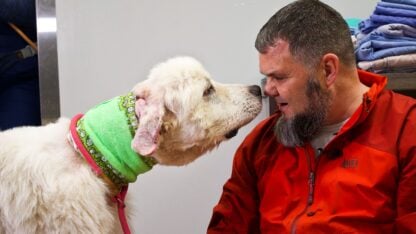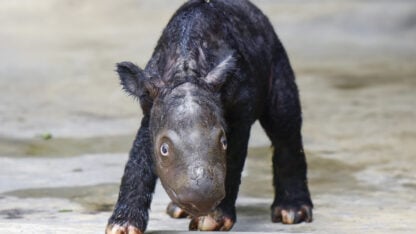As the Endangered Species Act turns 50, Georgia searches for populations of elusive salamanders
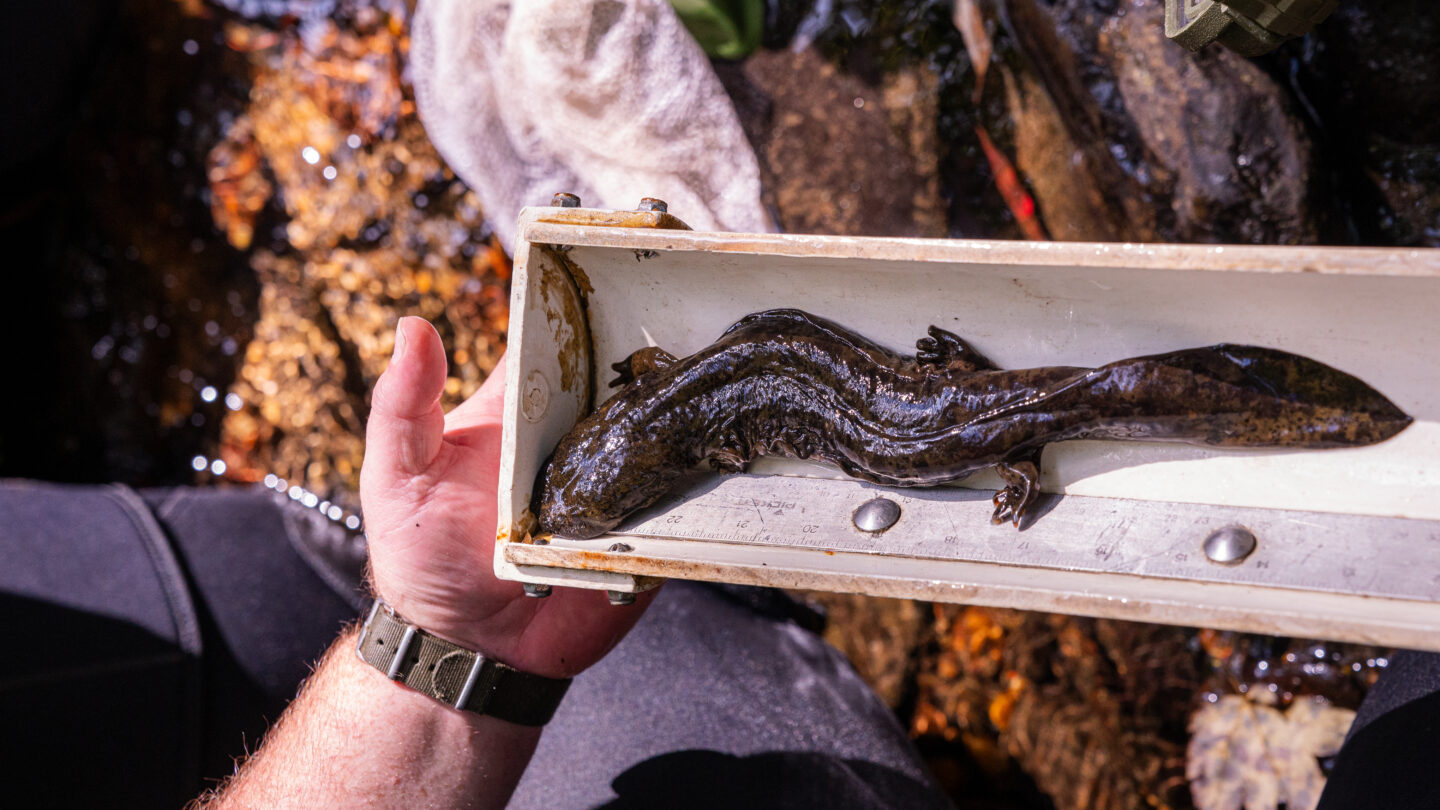
In a cold, burbling mountain stream in north Georgia, Georgia Department of Natural Resources wildlife biologist Thomas Floyd is on his hands and knees.
He’s feeling around rocks, peeking his head under the water with goggles on to find a little hole.
If he’s lucky, he’ll find a salamander: the hellbender.

The eastern hellbender is the largest salamander (by weight) in North America, a hulking predator in the underwater world that can grow up to two feet long.
Among threatened and endangered species, they’ve gained a mythological status: elusive critters that can ooze snot from their skin.
Their air of mystery is even written into their scientific name: Cryptobranchus alleganiensis alleganiensis. The “crypto” means hidden, while “branchus” refers to their gills, which disappear and are absorbed into their body when they are about two years old.
The strange salamander can also live for decades, but their populations have dwindled far enough to cause concern.
“That’s the big conservation issue with hellbenders — sediment,” Floyd said. “Sediment not only affects the ability of hellbenders to uptake oxygen from the water; sediment also fills in the interstitial spaces between the rock in the stream bed, and then hellbenders have no habitat.”
Hellbenders prefer clean, rocky streams with a decent flow. Development in their watersheds has been a driver of habitat degradation as the water quality is eroded by sediment and other runoff that enters not only the holes in which they make their homes but also their gills. Salamanders, like all other amphibians, are defined by their ability to breathe through their gills and skin, and when that becomes disrupted, their overall health and population can take a hit.
As the Endangered Species Act turns 50, hellbenders are unique in Georgia, jostling for a place on the protected species list. Their case, however, is less clear-cut than many.
In 2019, the U.S. Fish and Wildlife Service listed a small population of hellbenders in Missouri, known as the Ozark Hellbender, as endangered. This distinct subspecies is native to the Ozark Plateau in southern Missouri and northern Arkansas. But in 2021, environmental advocates sued because they wanted the whole species listed, given the overall population decline. While courts had previously decided that the species didn’t merit the endangered status, this September, a federal judge ordered the Fish and Wildlife Service to reconsider its decision.
The politics of the endangered species listing might seem like a lot for a little amphibian, but that is because listing a species puts into motion big changes that can have sprawling consequences for humans and the environment. They can garner larger environmental protections in the species’ habitat and also require increased regulation and scrutiny in environmental permitting for development. Business, politics and money all get involved.
For Georgia, one person who has been spearheading the effort to survey hellbender populations in the state is Thomas Floyd or, as he might call himself, “the hellbender-ologist.” He also works with other species, like the bog turtle. For Floyd, consistency is one of the most critical factors in his work with hellbenders.
“Alright, our track starts here to the bridge — I had a late start on one day and only got halfway done, so we’re finishing it now,” Floyd told his volunteers. He surveys the same stretches of stream every year during the fall up until mid-to-late September and has done so since 2011.
Using the same location, he said, helps researchers get a consistent picture of how the population ebbs and flows over time and gives them comparable, longitudinal data to track those trends.
While his data isn’t being collected to determine whether hellbenders should be classified as endangered, it can inform the Georgia DNR on what areas may have more significant problems with habitat degradation or species die-off for other reasons.
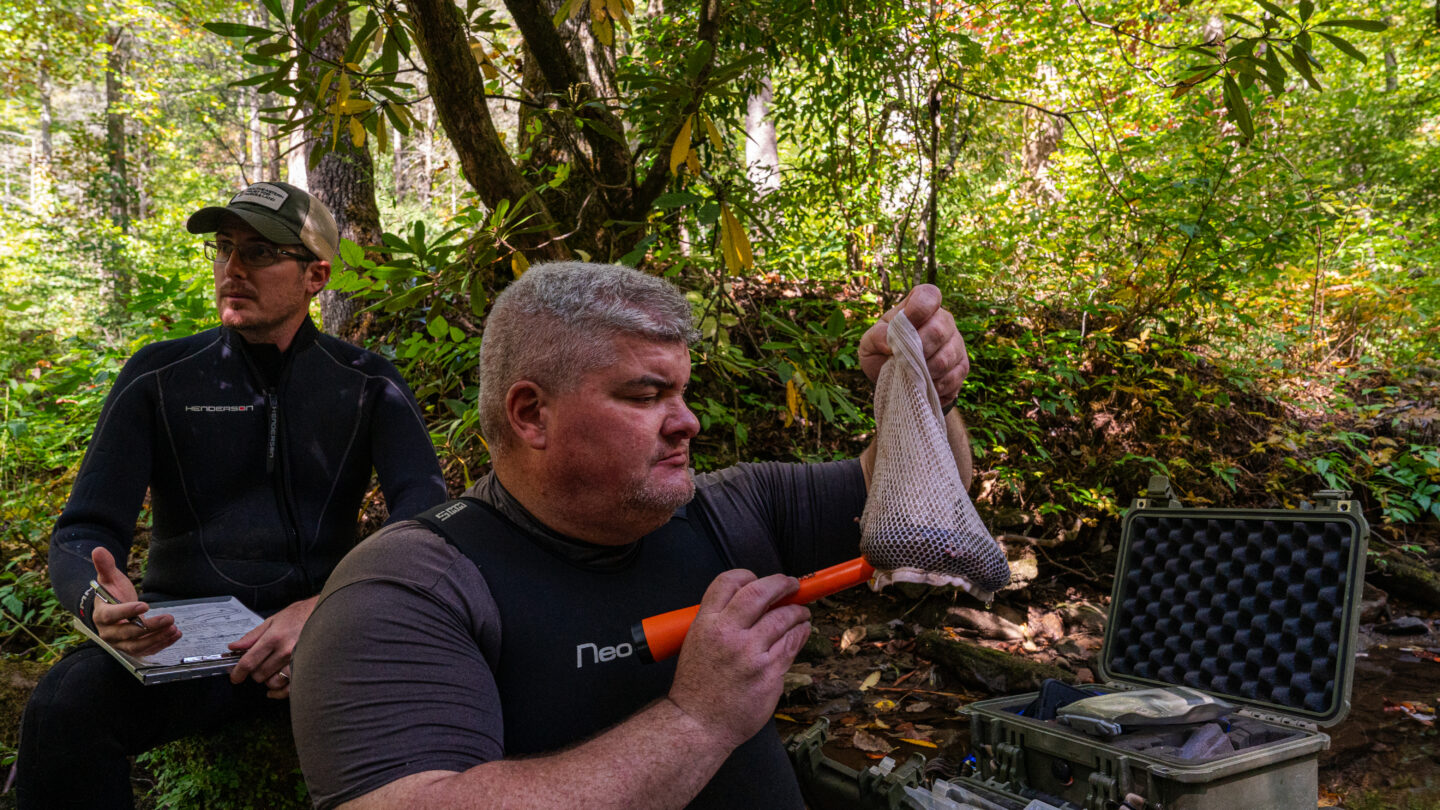
He and his volunteer helpers collect that data by wading into rocky streams and lifting the stones they think may have a hellbender underneath: wide and flat with little holes in which the hellbenders make their homes.
“They tend to like runs rather than riffles and pools,” Floyd said to a Georgia DNR Wildlife Resources Division intern, referring to how water moves over different rocks and crevices in the stream.
With over a decade of experience, Floyd has picked up a sixth sense for the sport of finding hellbenders.
He looked over the stream and pointed at what spots might be a good find, and then, clad in his wetsuit, goggles and tiling knee pads from a hardware store, he got down low.
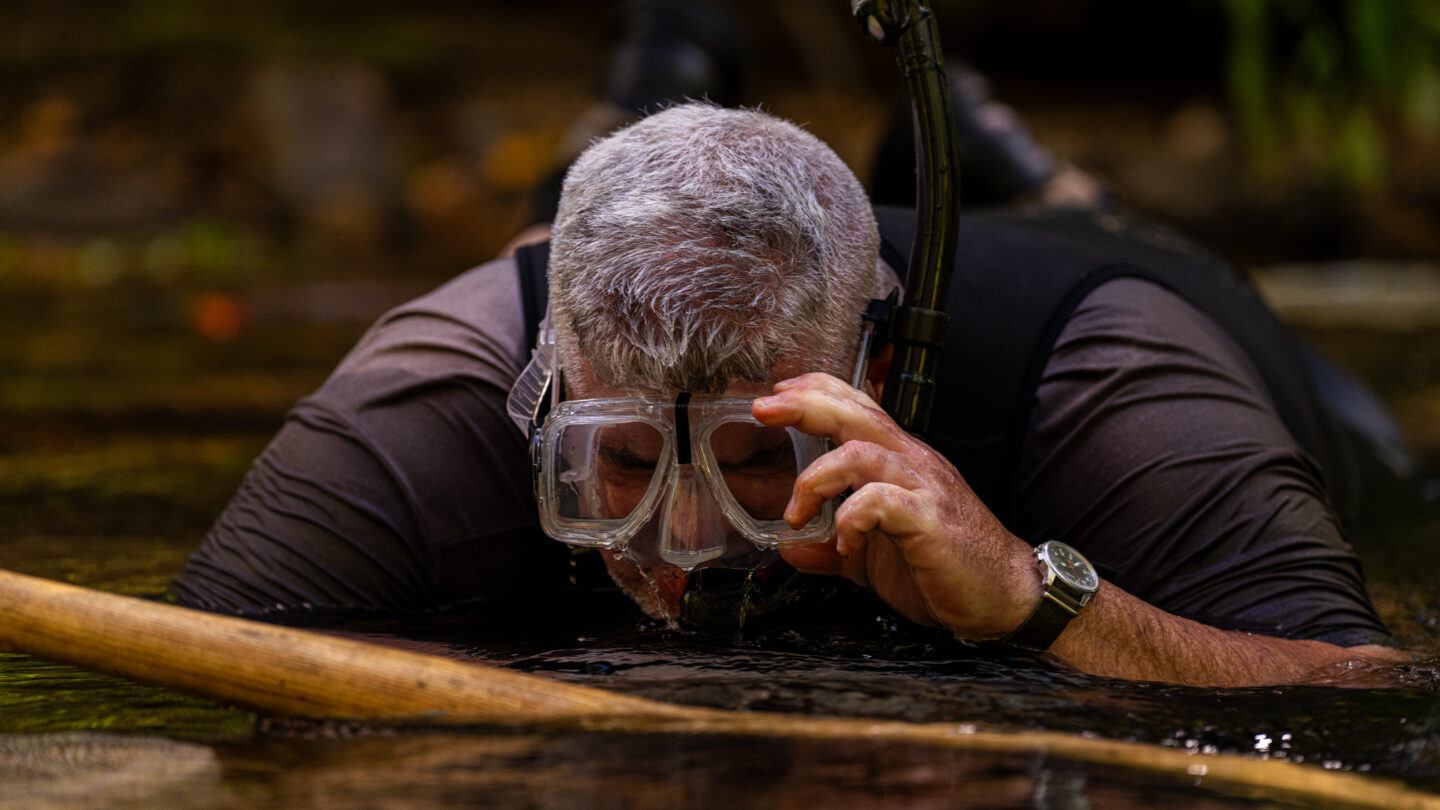
Georgia DNR wildlife biologist Thomas Floyd lays chest flat in a stream, peeking to see where a hellbender may be hiding. (Matthew Pearson/WABE)
When they found a good prospect, Floyd ran his hand along the edge of the rock and assembled a team with nets to surround him. The salamander could shoot out in any direction when he lifted the rock.
One of his volunteers fished the hellbender out of the net using a mesh sleeve they call their “lingerie” bags so the slippery amphibian wouldn’t get away.
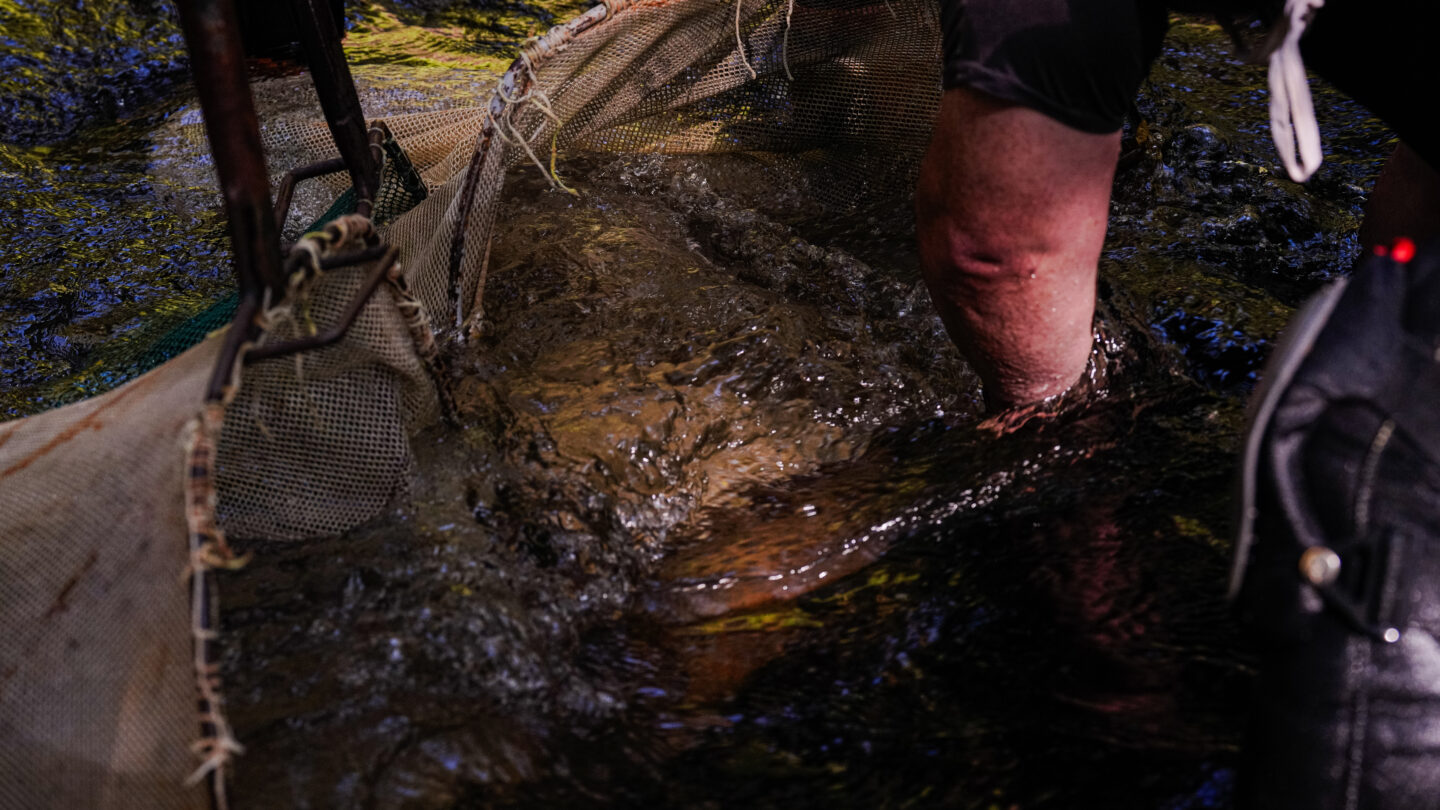
“Because if they slime or snot, you’re not gonna hang on for long,” said Keith Ray, a biologist who has joined Floyd over the years to help with hellbender surveys. “They have a lot of musculature.”
Once in his hand, Ray said hellbenders can be feisty. They will alligator roll to get out of his hands, and Floyd noted that there is even an urban legend that they have used their sharp, little teeth to take all the skin off a finger. They joked that the mesh bag protects both them and the hellbenders.
They turned their attention to processing all the information they could get from the individual hellbender before releasing it back into its hole.
“This is my mobile laboratory,” Floyd said, gesturing to a gussied-up waterproof suitcase attached to a military pack frame. “I’ve got everything I need to process a hellbender right here.”

Inside are vials for specimen collection — like blood and tissue — and equipment for tagging the hellbenders with PIT tags and microchips like the ones owners give to pet dogs and cats.
This one is about the size of a grain of rice. The data helps researchers understand not only population growth or decline but also genetic diversity in the species.
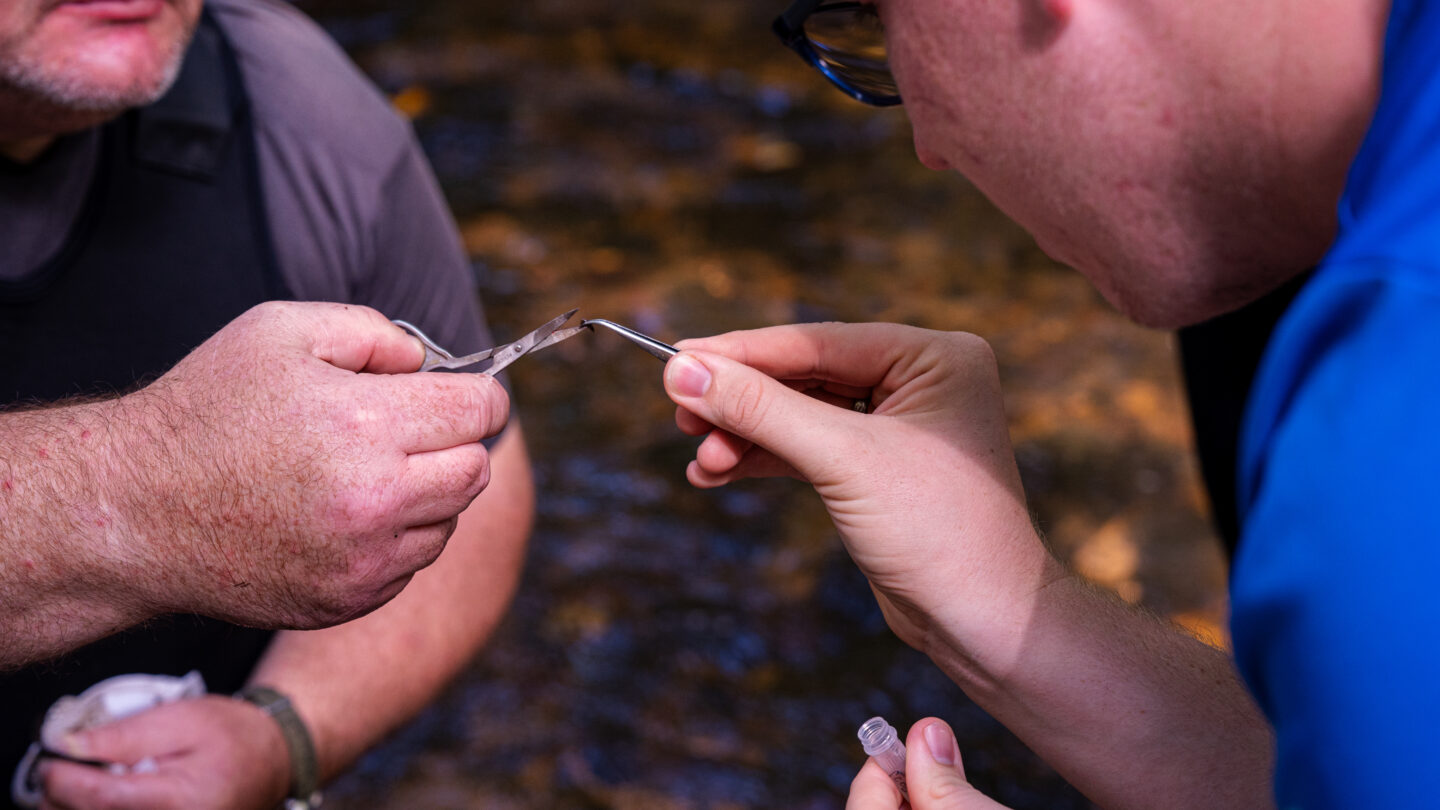
Using small tweezers, Floyd and a Georgia Department of Natural Resources intern pass a specimen to place into a vial. (Matthew Pearson/WABE)
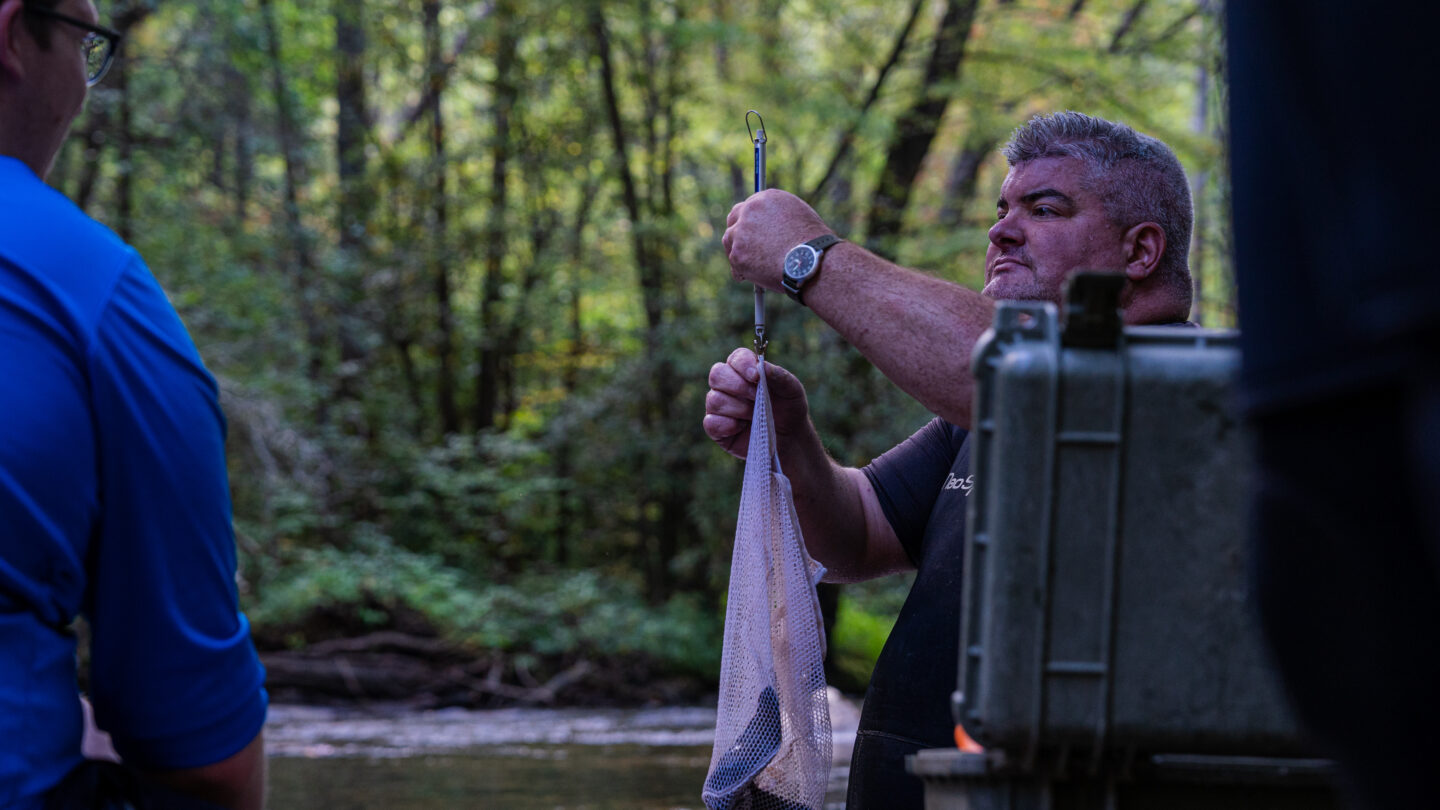
Thomas Floyd uses a handheld scale to weigh a hellbender. (Matthew Pearson/WABE)
While the overall population trends for hellbenders concern conservation advocates, this was a good day on the stream for Floyd. They found several hellbenders over the course of the day, enough to not finish their survey area.
Floyd would have to go back another day.
